 W
WGroundhog Technologies is a privately held company founded in 2001 and is headquartered in Cambridge, Massachusetts, USA. As a spin-off of MIT Media Lab, it was a semi-finalist in MIT's $50,000 Entrepreneurship Competition in 2000 and was incorporated the following year. The company received the first round of financing from major Japanese corporations and their venture capital arms in November 2002: Marubeni, Yasuda Enterprise Development and Japan Asia Investment Co. It received second round of financing in 2004 and since then has become self-sustainable.
 W
WMobile telephony is the provision of telephone services to phones which may move around freely rather than stay fixed in one location. Telephony is supposed to specifically point to a voice-only service or connection, though sometimes the line may blur.
 W
WIn telecommunications, 5G is the fifth generation technology standard for broadband cellular networks, which cellular phone companies began deploying worldwide in 2019, and is the planned successor to the 4G networks which provide connectivity to most current cellphones. 5G networks are predicted to have more than 1.7 billion subscribers worldwide by 2025, according to the GSM Association. Like its predecessors, 5G networks are cellular networks, in which the service area is divided into small geographical areas called cells. All 5G wireless devices in a cell are connected to the Internet and telephone network by radio waves through a local antenna in the cell. The main advantage of the new networks is that they will have greater bandwidth, giving higher download speeds, eventually up to 10 gigabits per second (Gbit/s). Due to the increased bandwidth, it is expected the networks will not exclusively serve cellphones like existing cellular networks, but also be used as general internet service providers for laptops and desktop computers, competing with existing ISPs such as cable internet, and also will make possible new applications in internet of things (IoT) and machine to machine areas. 4G cellphones are not able to use the new networks, which require 5G enabled wireless devices.
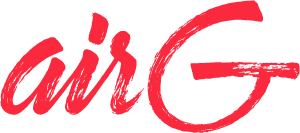 W
WairG Incorporated (airG) is a Canadian software company.
 W
WAndroid Cloud to Device Messaging, or C2DM, is a defunct mobile notification service that was developed by Google and replaced by the Google Cloud Messaging service. It enabled developers to send data from servers to Android applications and Chrome extensions. C2DM originally launched in 2010 and was available beginning with version 2.2 of Android. On June 27, 2012, Google unveiled the Google Cloud Messaging service aimed at replacing C2DM, citing improvements to authentication and delivery, new API endpoints and messaging parameters, and the removal of API rate limits and maximum message sizes. Google announced official deprecation of the C2DM service in August 2012, and released documentation to assist developers with migrating to the new service. The C2DM service was discontinued for existing applications and completely shut down on October 20, 2015.
 W
WThe Bridge Alliance is a business alliance of 34 major mobile telecommunications companies in Asia, Australia, Africa and the Middle East. The alliance is built on seamless service connectivity and a suite of integrated value-added services, including IoT/M2M, Optimization and Enterprise Mobility, for all alliance members' subscribers while roaming on each other's networks. The concept is similar to that of the FreeMove alliance in Europe, with whom the Bridge Alliance has a partnership.
 W
WThe Cell Phone Freedom Act was a private member's bill proposed twice to the Parliament of Canada which would have required mobile phone providers remove the SIM lock from devices once a customer reaches the end of their contract.
 W
WA cellular network or mobile network is a communication network where the last link is wireless. The network is distributed over land areas called "cells", each served by at least one fixed-location transceiver, but more normally, three cell sites or base transceiver stations. These base stations provide the cell with the network coverage which can be used for transmission of voice, data, and other types of content. A cell typically uses a different set of frequencies from neighbouring cells, to avoid interference and provide guaranteed service quality within each cell.
 W
WCOSMOS is a cohort study of mobile phone use and health. The study will investigate the possible health effects of long-term use of mobile phones and other wireless technologies. It is an international study being conducted in five European countries – UK, Denmark, Sweden, Finland, the Netherlands and France. In the UK Imperial College London is carrying out this research.
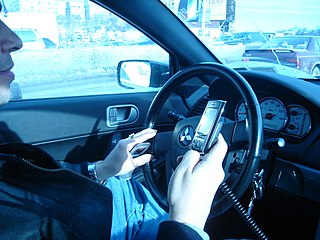 W
WMobile phone use while driving is common but it is widely considered dangerous due to its potential for causing distracted driving and crashes. Due to the number of crashes that are related to conducting calls on a phone and texting while driving, some jurisdictions have made the use of calling on a phone while driving illegal. Many jurisdictions have enacted laws to ban handheld mobile phone use. Nevertheless, many jurisdictions allow use of a hands-free device. Driving while using a hands-free device is not safer than using a handheld phone to conduct calls, as concluded by case-crossover studies, epidemiological, simulation, and meta-analysis. In some cases restrictions are directed only at minors, those who are newly qualified license holders, or to drivers in school zones. In addition to voice calling, activities such as texting while driving, web browsing, playing video games, or phone use in general can also increase the risk of a crash.
 W
WSome mobile phones support use of two SIM cards, described as dual SIM operation. When a second SIM card is installed, the phone either allows users to switch between two separate mobile network services manually, has hardware support for keeping both connections in a "standby" state for automatic switching, or has individual transceivers for maintaining both network connections at once.
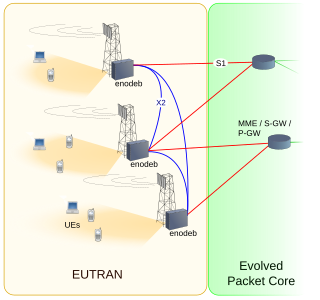 W
WE-UTRA is the air interface of 3rd Generation Partnership Project (3GPP) Long Term Evolution (LTE) upgrade path for mobile networks. It is an acronym for Evolved Universal Mobile Telecommunications System (UMTS) Terrestrial Radio Access, also referred to as the 3GPP work item on the Long Term Evolution (LTE) also known as the Evolved Universal Terrestrial Radio Access (E-UTRA) in early drafts of the 3GPP LTE specification. E-UTRAN is the initialism of Evolved UMTS Terrestrial Radio Access Network and is the combination of E-UTRA, user equipment (UE), and E-UTRAN Node B or Evolved Node B (EnodeB).
 W
WIn telecommunications, a femtocell is a small, low-power cellular base station, typically designed for use in a home or small business. A broader term which is more widespread in the industry is small cell, with femtocell as a subset. It is also called femto AccessPoint (AP). It connects to the service provider's network via broadband ; current designs typically support four to eight simultaneously active mobile phones in a residential setting depending on version number and femtocell hardware, and eight to sixteen mobile phones in enterprise settings. A femtocell allows service providers to extend service coverage indoors or at the cell edge, especially where access would otherwise be limited or unavailable. Although much attention is focused on WCDMA, the concept is applicable to all standards, including GSM, CDMA2000, TD-SCDMA, WiMAX and LTE solutions.
 W
WFortumo is an Estonian direct carrier billing company which develops a platform for app stores and digital service providers for user acquisition, monetization and retention.
 W
WA global network is any communication network which spans the entire Earth. The term, as used in this article refers in a more restricted way to bidirectional communication networks, and to technology-based networks. Early networks such as international mail and unidirectional communication networks, such as radio and television, are described elsewhere.
 W
WGoogle Cloud Messaging (GCM) was a mobile notification service developed by Google that enables third-party application developers to send notification data or information from developer-run servers to applications that target the Google Android Operating System, as well as applications or extensions developed for the Google Chrome internet browser. It was available to developers free of charge. The GCM Service was first announced in June 2012 as a successor to Google's now-defunct Android Cloud to Device Messaging (C2DM) service, citing improvements to authentication and delivery, new API endpoints and messaging parameters, and the removal of limitations on API send-rates and message sizes. It has been superseded by Google's Firebase Cloud Messaging (FCM) on May 29, 2019.
 W
Wip.access Limited is a multinational corporation that designs, manufactures, and markets small cells technologies and infrastructure equipment for GSM, GPRS, EDGE, 3G, 4G and 5G. The company was acquired by Mavenir, the cloud-native software supplier to the communication service provider in September 2020.
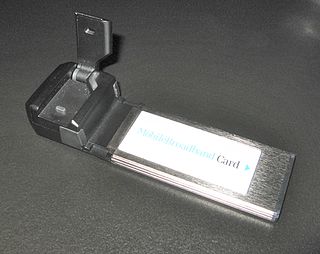 W
WMobile broadband is the marketing term for wireless Internet access through a portable modem, USB wireless modem, or a tablet/smartphone or other mobile device. The first wireless Internet access became available in 1991 as part of the second generation (2G) of mobile phone technology. Higher speeds became available in 2001 and 2006 as part of the third (3G) and fourth (4G) generations. In 2011, 90% of the world's population lived in areas with 2G coverage, while 45% lived in areas with 2G and 3G coverage. Mobile broadband uses the spectrum of 225 MHz to 3700 MHz.
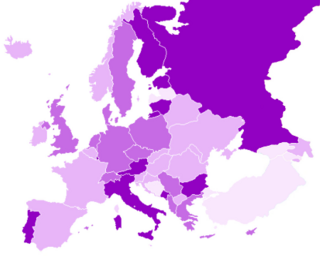 W
WA mobile network operator or MNO is a provider of wireless communications services. The main MNOs in Europe are listed below.
 W
WMobile news refers to both the delivery and creation of news using mobile devices.
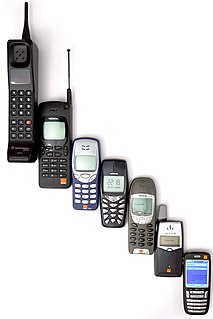 W
WA mobile phone, cellular phone, cell phone, cellphone, handphone, or hand phone, sometimes shortened to simply mobile, cell or just phone, is a portable telephone that can make and receive calls over a radio frequency link while the user is moving within a telephone service area. The radio frequency link establishes a connection to the switching systems of a mobile phone operator, which provides access to the public switched telephone network (PSTN). Modern mobile telephone services use a cellular network architecture and, therefore, mobile telephones are called cellular telephones or cell phones in North America. In addition to telephony, digital mobile phones (2G) support a variety of other services, such as text messaging, MMS, email, Internet access, short-range wireless communications, business applications, video games and digital photography. Mobile phones offering only those capabilities are known as feature phones; mobile phones which offer greatly advanced computing capabilities are referred to as smartphones.
 W
WA mobile phone signal is the signal strength received by a mobile phone from a cellular network. Depending on various factors, such as proximity to a tower, any obstructions such as buildings or trees, etc. this signal strength will vary. Most mobile devices use a set of bars of increasing height to display the approximate strength of this received signal to the mobile phone user. Traditionally five bars are used.
 W
WMobile reporting is a trend emerging in the field of news and content generation. The term describes the use of a mobile phone as a reporting tool. The user creates text, photo and video that combined produces a multimedia based report. The content is edited on the phone before being uploaded to the internet via mobile network or Internet connection. Usually mobile reporting is used for publishing to the web. This is particularly the case with video as the technology does not yet allow for the production of high end video. However, the low quality is suitable for Internet.
 W
WThe mobile switching station, abbreviated as MSC Server or MSS, is a 2G core network element which controls the network switching subsystem elements. Alternatively or adaptively, MSS can be used in GSM networks as well, if the manufacturer has implemented support for GSM networks in the MSS. Since an immediate upgrade of existing GSM network to 3G is not viable due to various issues like handset incompatibilities and high expenditure, most manufacturers do implement GSM support in MSS. In fact, MSS along with other 3G network elements such as media gateway (MGW), can be configured to support GSM network exclusively and can be considered as an upgraded version of existing GSM mobile switching centres. The MSC Server is standards-based and communicates with other distributed elements using industry open standards such as media gateway control protocol, megaco/H.248, session initiation protocol, M2UA and M3UA. The MSC server incorporates industry standards as defined by ETSI, ITU, GSM, 3GPP and 3GPP2 and other leading standard bodies. The MSS supports the regulatory environment set by governing bodies via its support for E911, CALEA/legal intercept, wireless and local number portability, TTY/TTD, and Number Pooling requirements.
 W
WNear-Field-Communication (NFC) is a set of communication protocols for communication between two electronic devices over a distance of 4 cm or less. NFC offers a low-speed connection with simple setup that can be used to bootstrap more-capable wireless connections.
 W
WThe Next Generation Mobile Networks (NGMN) Alliance is a mobile telecommunications association of mobile operators, vendors, manufacturers and research institutes. It was founded by major mobile operators in 2006 as an open forum to evaluate candidate technologies to develop a common view of solutions for the next evolution of wireless networks. Its objective is to ensure the successful commercial launch of future mobile broadband networks through a roadmap for technology and friendly user trials. Its office is in Frankfurt, Germany.
 W
WThe Ninetology Vox (C1240) is a dual band GSM 900/1800 color mobile phone manufactured by Ninetology with dual SIM capabilities. It was announced in November 2012 via a campaign called VOX G.O.L.D Fund that aimed to raise donations funds for Yayasan Maha Karuna.
 W
WNomophobia is a humorous word for the fear of, or anxiety caused by, not having a working mobile phone. It has been considered a symptom or syndrome of problematic digital media use in mental health, the definitions of which are not standardized.
 W
WThe Open Base Station Architecture Initiative (OBSAI) was a trade association created by Hyundai, LG Electronics, Nokia, Samsung and ZTE in September 2002 with the aim of creating an open market for cellular network base stations. The hope was that an open market would reduce the development effort and costs traditionally associated with creating base station products.
 W
WOver the Air was an annual mobile technology-focused overnight hack day event held in London from 2008 to 2016. The two-day event would include practical and educational talks and a hacking competition. Sponsors of the event have included the BBC, Bluevia, Nokia, PayPal, and Vodafone. Some of the ideas developed at Over the Air have been turned into commercial services.
 W
WKamal S. Quadir is a Bangladeshi American entrepreneur and artist best known for introducing e-commerce in Bangladesh by founding CellBazaar, an electronic marketplace which, after reaching 4 million users, was acquired by Norwegian telecommunications operator Telenor in 2010. CellBazaar later was rebranded as ekhanei.com.
 W
WMobile radio telephone systems were telephone systems of a wireless type that preceded the modern cellular mobile form of telephony technology. Since they were the predecessors of the first generation of cellular telephones, these systems are sometimes retroactively referred to as pre-cellular systems. Technologies used in pre-cellular systems included the Push to Talk, Mobile Telephone Service (MTS), Improved Mobile Telephone Service (IMTS), and Advanced Mobile Telephone System (AMTS) systems. These early mobile telephone systems can be distinguished from earlier closed radiotelephone systems in that they were available as a commercial service that was part of the public switched telephone network, with their own telephone numbers, rather than part of a closed network such as a police radio or taxi dispatch system.
 W
WA radiotelephone is a radio communication system for transmission of speech over radio. Radiotelephony means transmission of sound (audio) by radio, in contrast to radiotelegraphy, which is transmission of telegraph signals, or television, transmission of moving pictures and sound. The term may include radio broadcasting systems, which transmit audio one way to listeners, but usually refers to two-way radio systems for bidirectional person-to-person voice communication between separated users, such as CB radio or marine radio. In spite of the name, radiotelephony systems are not necessarily connected to or have anything to do with the telephone network, and in some radio services, including GMRS, interconnection is prohibited.
 W
WA satellite telephone, satellite phone or satphone is a type of mobile phone that connects to other phones or the telephone network by radio through orbiting satellites instead of terrestrial cell sites, as cellphones do. The advantage of a satphone is that its use is not limited to areas covered by cell towers; it can be used in most or all geographic locations on the Earth's surface.
 W
WSmall cells are low-powered cellular radio access nodes that operate in licensed and unlicensed spectrum that have a range of 10 meters to a few kilometers. Recent FCC orders have provided size and elevation guidelines to help more clearly define small cell equipment. They are "small" compared to a mobile macrocell, partly because they have a shorter range and partly because they typically handle fewer concurrent calls or sessions. As wireless carriers seek to 'densify' existing wireless networks to provide for the data capacity demands of "5G"; small cells are currently viewed as a solution to allow re-using the same frequencies and as an important method of increasing cellular network capacity, quality and resilience with a growing focus using LTE Advanced.
 W
WTecTiles are a near field communication (NFC) application, developed by Samsung, for use with mobile smartphone devices.
 W
WTethering, or phone-as-modem (PAM), is the sharing of a mobile device's Internet connection with other connected computers. Connection of a mobile device with other devices can be done over wireless LAN (Wi-Fi), over Bluetooth or by physical connection using a cable, for example through USB.
 W
WVITAband is a silicone encircling strip worn on the wrist. It can be referred to a bracelet-like band of a wristwatch, to the cuff or other part of a sleeve that covers the wrist. It is a lightweight, waterproof and hypoallergenic flexible wristband that is used when jogging, running, cycling or hiking, or when carrying a wallet is inconvenient. VITAband holds emergency medical information and Visa RFID credit card information. The wristband has two unique features. It comprises an integrated Visa Debit card with payWave wireless functionality and a toll-free phone number with unique identity code that can be used by EMTs to retrieve health information and contacts in case of an accident or health emergency.
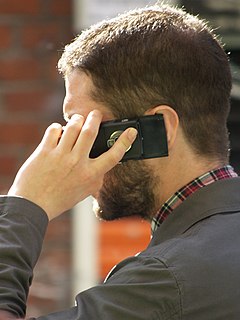 W
WThe antennas contained in mobile phones, including smartphones, emit radiofrequency (RF) radiation ; the parts of the head or body nearest to the antenna can absorb this energy and convert it to heat. Since at least the 1990s, scientists have researched whether the now-ubiquitous radiation associated with mobile phone antennas or cell phone towers is affecting human health. Mobile phone networks use various bands of RF frequency, some of which overlap with the microwave range. Other digital wireless systems, such as data communication networks, produce similar radiation.